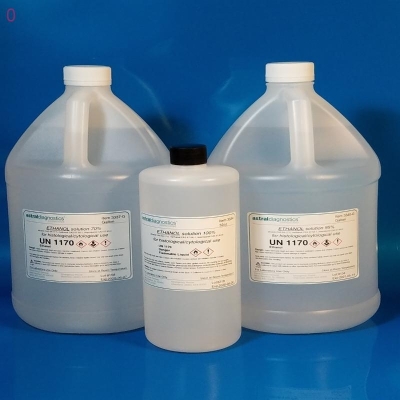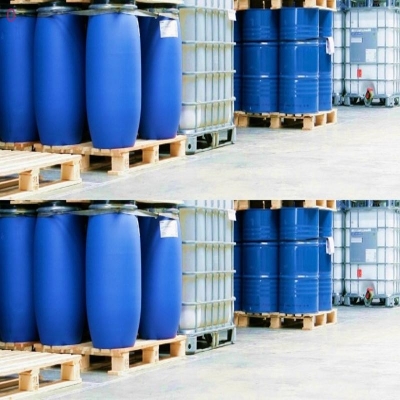-
Categories
-
Pharmaceutical Intermediates
-
Active Pharmaceutical Ingredients
-
Food Additives
- Industrial Coatings
- Agrochemicals
- Dyes and Pigments
- Surfactant
- Flavors and Fragrances
- Chemical Reagents
- Catalyst and Auxiliary
- Natural Products
- Inorganic Chemistry
-
Organic Chemistry
-
Biochemical Engineering
- Analytical Chemistry
- Cosmetic Ingredient
-
Pharmaceutical Intermediates
Promotion
ECHEMI Mall
Wholesale
Weekly Price
Exhibition
News
-
Trade Service
The main component of LNG (Liquefied Natural Gas, LNG) is methane, which is recognized as the cleanest fossil energy on earth.
From a global perspective, in 2019, the total global natural gas production reached 3,989.
3 billion cubic meters, and the total consumption reached 3,929.
2 billion cubic meters.
The United States and Russia are the main gas producers and consumers.
The global natural gas trade volume has maintained a growth trend, and the growth trend has accelerated since 2015.
From a Chinese perspective, China’s upstream exploration and development have advanced by leaps and bounds, and the production of natural gas has also been greatly increased.
On the whole, the global supply and demand of natural gas continue to grow.
Under the trend of "carbon neutrality" and accelerated use of clean energy, the future market size can grow.
The upstream, middle and downstream conditions of the LNG industry chain
The main component of Liquefied Natural Gas (LNG) is methane, which is recognized as the cleanest fossil energy on earth.
LNG is colorless, odorless, non-toxic and non-corrosive.
Its volume is about 1/625 of the same volume of gaseous natural gas, and its mass is only about 45% of the same volume of water.
The LNG industry chain can be divided into upper, middle and downstream
Upstream of the industrial chain
The upstream mainly includes several links such as exploration, development, purification, separation, and liquefaction.
Among them, liquefaction is a key link in the upstream of the LNG industry chain.
The main function of liquefaction is to continuously liquefy the raw material gas into LNG products.
The main steps are first pretreatment, that is, to remove impurities from the raw material gas that are not removed in the gas field production process, such as water, carbon dioxide, sulfur, mercaptans, etc.
Midstream of the industry chain
The midstream mainly includes the storage and loading and transportation of LNG, the construction of receiving stations (including storage tanks and regasification facilities) and the main gas supply pipeline network.
Among them, storage means that LNG liquid products are stored at or near atmospheric pressure.
Among the insulated storage tanks, the most common types of storage tanks include single-capacity storage tanks, double-capacity storage tanks, and full-capacity storage tanks.
Downstream of the industrial chain
The downstream links are end-market users, including combined cycle power stations, city gas companies, industrial furnace users, industrial parks, and buildings with distributed energy stations for multi-generation of cooling, heating and power, as well as gas station users that use natural gas as vehicle fuel.
As a user of chemical raw materials, as well as all LNG-related industries, such as LNG satellite stations, gas filling stations, LNG filling stations and cold energy utilization, which are further extended downwards.
Global LNG production, consumption and trade situation
produce
From the perspective of total natural gas production, global natural gas production has grown steadily since 1970.
BP data shows that the total global natural gas production in 1970 was 976.
1 billion cubic meters, and by 2019 the total production reached 3,989.
3 billion cubic meters, showing an overall upward trend.
In terms of major global natural gas producers, the United States and Russia have been major producers of natural gas since 1985, followed by rapid growth in natural gas production in Canada, Iran, China, and Qatar.
In 2019, the United States' natural gas production accounted for 23.
consumption
From the perspective of natural gas consumption, global natural gas consumption has grown steadily since 1965, and consumption in 2009 has dropped significantly compared to 2008.
BP data shows that the total global natural gas consumption in 1965 was 630.
4 billion cubic meters, and by 2019 the total consumption reached 3,929.
Among the major consumers of natural gas in the world, the United States and Russia have been major consumers of natural gas since 1985.
China, Canada, Iran, Japan, and Saudi Arabia have followed closely, especially China, which has come from behind for nearly 10 years.
trading
The global natural gas trade volume has maintained a growth trend, and the growth trend has accelerated since 2015.
In 2000, the global natural gas import volume was 140.
5 billion cubic meters and rose to 337.
1 billion cubic meters in 2015.
After 2015, other major importing countries have The demand for natural gas is relatively stable or has declined.
Therefore, the sudden increase in global natural gas after 2015 is mainly due to the increase in China’s demand.
The substantial increase in China’s demand for natural gas is mainly affected by the country’s “coal-to-gas” policy.
It can be seen that natural gas imports from Japan and China (including Taiwan, China) accounted for nearly 50% of global imports in 2019, which has a significant impact on global natural gas trade.
Among the major importers of natural gas in 2019, Japan’s imports accounted for 21.
75% of global imports, making it the largest natural gas importer, followed by Mainland China (excluding Taiwan) with 17.
48%, South Korea and India with 11.
46 each.
% And 6.
78%.
Among them, the main sources of natural gas imports from Japan and China are Australia, Malaysia and Qatar.
The largest importers of South Korea and India are both Qatar, and India's dependence on Qatar natural gas imports reaches 40.
12%.
The main exporters of natural gas are the United States, Australia, Malaysia, Qatar, Nigeria, etc.
, while exports from other countries are small and relatively scattered.
From 2016 to 2019, the export volume of natural gas from all major exporting countries has increased significantly, with Australia and Malaysia experiencing the fastest growth.
Among the global natural gas exporting countries in 2019, Qatar accounted for 22.
08%, Australia accounted for 21.
58%, the United States accounted for 9.
79%, and the three countries accounted for more than 50%, followed by Malaysia, Nigeria and other countries.
Among the major exporters of natural gas in 2019, Qatar's natural gas with the largest export volume mainly flows to South Korea, India, Japan, China and the United Kingdom, and the export volume is relatively average.
The United States mainly exports to South Korea, Japan, Spain, Mexico and France, with the largest export volume to South Korea, reaching 15.
16%.
The export flows from Australia and Malaysia are roughly the same, mainly to Japan, China and South Korea.
China's LNG production, consumption and trade situation
produce
Data shows that in 2019, China's upstream exploration and development of natural gas has advanced by leaps and bounds, and natural gas production has also been greatly increased, which is closely related to the national policy of "increasing reserves and production".
In 2019, the National Energy Administration formulated the "Seven-Year Action Plan" for the oil and gas industry to increase reserves and production.
At the same time, it held a work promotion meeting to vigorously increase oil and gas exploration and development in May.
The main responsibility of the property is to complete the work requirements of the seven-year action plan for 2019-2025 without compromise.
" This is the first time that China has proposed a "seven-year action plan" in the oil and gas exploration and development industry.
In response to the call, the "Three Barrels of Oil" formulated relevant development plans to increase spending on increasing reserves and production.
Therefore, China's natural gas production increase in 2019 has a significant effect.
In 2019, China's natural gas production reached 173.
7 billion cubic meters, a year-on-year increase of 9.
5%, an acceleration of 2 percentage points from the same period last year, and it was the fastest year of production growth since 2015.
Among them, Shaanxi, Xinjiang, Sichuan, Guangdong and other places have large production, which belong to the northwest, southwest and south of China.
Shaanxi’s natural gas production accounts for 29.
7% of the country’s total, Sichuan accounts for 25.
48%, Xinjiang accounts for 20.
87%, and Guangdong Accounted for 7.
41%.
The production of LNG in the three provinces (regions) of Shaanxi, Xinjiang and Sichuan accounted for more than 80% of the country's total production, and the proportion is still expanding.
consumption
China's apparent natural gas consumption in 2019 reached 303.
9 billion cubic meters, of which the urban gas sector ranked first, reaching 37.
2%; followed by industrial gas and natural gas power generation gas, accounting for 34.
9% and 17.
8% respectively ; The chemical gas has the lowest proportion of 10.
1%.
20162019,,。,201618%201937.
2%,“”,,。,,2019,,,,,2018,2018。2017,,,,,。
、。2017,、、、7.
1%、6.
7%、5.
0%、3.
0%,,,,,。
,,2018,7.
6,3100。、、,、、,、、,A、B、C,D,“、、、”。
,。
,,,,、。,。
。、,、,,、、,、。
,,,,、、、、、,。
,LNG,、LNG。“”、、、,LNG。
,LNG,。LNG。2015“”,。2020915.
4,、、、。
:







